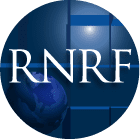Renewable Resources Report
Updating suspended during November 2022.
rganization of the United Nations (FAO) released its Status of the World’s Soil Resources report on December 4, 2015 during the International Year of Soils. The report is meant to be the first ever global assessment of soils and soil change. As stated in the Foreword, “soils are the foundation of food production and food…
The Water Resources Research Center at the University of Arizona published its Arroyo 2015 newsletter on “Closing the Water Demand-Supply Gap in Arizona.” The Arroyo’s executive publisher is Sharon Megdal, who spoke on sustainable water use in the Southwest at RNRF’s congress on December 1-2, 2015 in Washington, D.C. Authored by Susanna Eden, Madeline Ryder,…
The five-year federal surface transportation authorization law, Fixing America’s Surface Transportation (FAST) Act, was enacted on December 4, 2015. The law increases investment in surface transportation. While the backbone of federal transportation funding is the motor fuels tax, with revenues deposited in the High Trust Fund, current funding increases were not due to a gas…
The RNRF Washington Round Table on Public Policy met with Dr. Richard Denison, a lead senior scientist with Environmental Defense Fund (EDF), in Washington, D.C. on December 9, 2015. Denison discussed the history of TSCA and recent activity surrounding legislative reform. Richard DenisonSource: EDF Chemicals are now ubiquitous, used to make 96% of all materials and…
On MOOCs appears in Volume 29 No. 4 of the Renewable Resources Journal (RRJ), available for free download. MOOCs are massive online open courses, initiated by leading universities with the goal of providing high-quality educational experiences, either for free or for a nominal fee. The rise of MOOCs begs a rethinking of the strengths and…
Volume 29 No. 4 of the Renewable Resources Journal (RRJ), available now as a free download. California is currently in its fourth year of a severe drought. These past four years have been the driest since record-keeping began in the late 1800s. This drought has also been exceptionally warm, amplifying the effects of drought by…
st Conference of the Parties (COP 21) to the United Nations Framework Convention on Climate Change (UNFCCC). In early October, World Resources Institute (WRI) hosted RNRF’s round table on this topic with Jennifer Morgan, Global Director of WRI’s Climate Program [read the accompanying post for background information on the negotiations]. Volume 29 No. 4 of…
The House Committee on Science, Space and Technology, which oversees federally-funded scientific research, issued a subpoena on October 13, 3015 seeking all documents and communications related to a NOAA study. The study refutes the notion that there has been a slowdown, or “hiatus,” in the rate of global warming in recent years. It was published…
UPDATE: On December 16, 2015, Congress released an omnibus federal spending package that included a three-year reauthorization of the Land and Water Conservation Fund. The program will be funded at $450 million in 2016, a 50% increase over 2015 funding levels, but only half of the program’s full funding level of $900 million. On September 30, 2015, Congress…
Explaining Environmental Risk, prepared for the U.S. Environmental Protection Agency in 1986, provides guidance for policymakers on communicating with the media about environmental risk. Part II of the booklet, “Dealing with the Media,” identified seven key and timeless ideas. By understanding the nature of journalism and how journalists operate, it is possible to make yourself…
